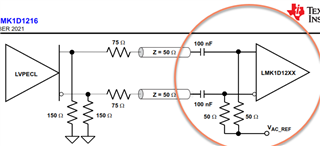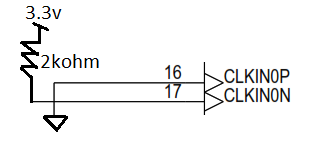Other Parts Discussed in Thread: LMK1D1208
Hello,
It is not clear from the Datasheet of LMK1D1212 how to connect the unused Input clock pins.
On the one hand it is written on page 14 of the datasheet :

Unused inputs can be left floating to reduce overall component cost.
On the other hand in page 16 written :
![]()
TI recommends grounding unused input Pins using 1-kohm resistors.
So in the same datasheet there are two different recommendations regard unused input pins.
Can you please clarify what is the recommended connection by TI ? (Same question regard LMK1D1208).
Ohad






